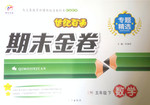��Ŀ����
����Ŀ���±�Ϊ�ҹ�9��26���ij��е�ʵ���������ݡ��ش��������⡣
���� | γ�� | ���Σ�m�� | ������£����� | ������£����� | ���� |
���� | 39.8��N | 54 | 18 | 3 | �� |
���� | 30.2��N | 40 | 17 | 11 | ���� |
���� | 20.0��N | 14 | 27 | 23 | �� |
���� | 29.7��N | 3649 | 19 | 6 | ���� |
��1��������������Ⱥ��ݵͣ���Ҫԭ���������� ����
A��γ�ȵ� B��������������ǿ
C���������������� D����������������
��2�������Ⱥ��������սϲ���һ�������������������µIJ�������Ҫԭ������ ����
A��γ�ȸ� B�������
C��������������ǿ D����������
���𰸡�
��1��C
��2��D
��������
���������
��1����ͼ��֪������γ�ȵ��ں��ݣ�γ�ȵ�Ӧ���¶ȸߣ�A�����������θߣ�����ϡ����������������B�������ڿ���ϡ�����������������C�ԡ�������������Խ������������̫������Խ�࣬����Խ�ߣ�D������ѡC��
��2����ͼ��֪�����ձ����������ʣ��������꣬������������������������������߿죬ҹ������������������¾��ң���ҹ�²��ѡD��

��ϰ��ϵ�д�
 ���Ͱ�ͨ��ĩ���ϵ�д�
���Ͱ�ͨ��ĩ���ϵ�д�
�����Ŀ